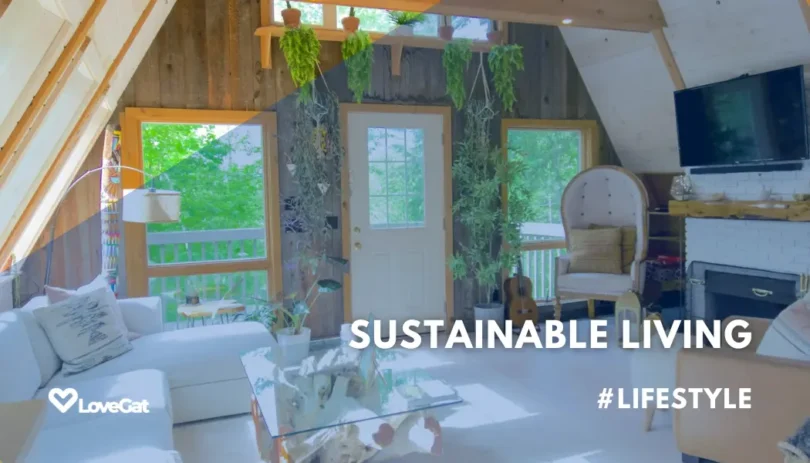Sustainable Living Tips for Beginners!
Embark on a greener lifestyle with our guide: “Sustainable Living Tips for Beginners.” Discover practical and achievable steps to make a positive impact on the environment. Let’s begin your journey toward a more eco-conscious and mindful life.
What is Sustainable Living?
Sustainable living revolves around conscious choices that reduce our environmental footprint. It encompasses practices aligned with environmental, social, and economic sustainability. By adopting this lifestyle, individuals contribute to the health of the planet, promote social equity, and ensure economic viability for generations to come.
Why Choose Sustainable Living?
The decision to embrace sustainable living carries multifaceted benefits. Apart from the obvious positive impact on the environment, individuals experience improved health, reduced costs, and a sense of social responsibility. Sustainable living aligns personal values with global well-being, creating a harmonious relationship between individuals and the Earth.
Getting Started with Sustainable Living
A. Assessing Your Current Lifestyle
Begin by assessing your current habits and their environmental implications. Evaluate your energy consumption, waste generation, and daily choices. This self-awareness forms the foundation for targeted improvements, allowing you to make informed decisions on your sustainability journey.
B. Setting Realistic Goals
Setting achievable and realistic goals is crucial for sustaining long-term commitment. Begin with small, attainable changes, such as reducing single-use items or implementing energy-efficient practices. Celebrate each accomplishment, recognizing that gradual progress leads to lasting change.
Sustainable Practices for Beginners
A. Eco-Friendly Consumption
Make informed choices when it comes to consumption. Opt for sustainable products and brands that prioritize ethical sourcing, fair labor practices, and eco-friendly manufacturing. Embrace minimalism to reduce overall consumption and, consequently, your environmental impact.
B. Sustainable Eating Habits
Consider adopting a plant-based diet, as it significantly reduces your ecological footprint. This shift not only benefits the environment but also contributes to personal health. Additionally, support local and sustainable food sources to strengthen community resilience and reduce the carbon footprint associated with food transportation.
C. Energy Efficiency at Home
Conserve energy by implementing simple practices, such as turning off lights when not in use, unplugging electronic devices, and investing in energy-efficient appliances. Consider transitioning to renewable energy sources, such as solar or wind, to further minimize your carbon footprint.
D. Waste Reduction and Recycling
Implement a comprehensive waste management strategy that includes the three Rs: reduce, reuse, and recycle. Composting organic waste is an effective way to divert materials from landfills, enriching the soil and closing the nutrient loop.
Sustainable Transportation Options
Exploring sustainable transportation alternatives is a pivotal step in reducing your carbon footprint. Opt for walking, biking, or public transportation when possible. If considering a vehicle, explore electric or hybrid options for a greener commute.
Creating a Sustainable Home
A. Green Home Practices
Incorporate green design principles into your home, focusing on energy efficiency, sustainable building materials, and eco-friendly landscaping. Choose appliances with high energy efficiency ratings and consider home renovations that prioritize sustainability.
B. Water Conservation
Conserve water by fixing leaks, using water-efficient appliances, and implementing rainwater harvesting systems. Small adjustments, such as turning off the tap while brushing teeth, collectively contribute to significant water savings.
Overcoming Challenges in Sustainable Living
While transitioning to sustainable living, individuals may face challenges such as societal norms, convenience, or budget constraints. Strategies for staying motivated include connecting with the sustainable living community, sharing experiences, and celebrating achievements. Recognizing that challenges are part of the journey helps maintain a positive and resilient mindset.
Tracking Progress
Monitoring and evaluating your sustainability efforts is essential for continuous improvement. Utilize apps and tools that calculate your ecological footprint, providing insights into areas for further enhancement. Regularly reassess and adjust your goals based on progress and changing circumstances.
In conclusion, sustainable living for beginners is an empowering journey of conscious choices and positive impact. By incorporating eco-friendly practices into daily life, individuals contribute to a healthier planet and inspire others to join the movement. Embrace the philosophy of sustainable living, knowing that even small actions collectively create significant change. Start your sustainable living journey today, and be a catalyst for a more sustainable and harmonious future.
Additional Resources
Read More
- Affordable Hobbies for a Fulfilling Life
- 5 Easy Steps to a More Mindful Life | by Roz Andrews – Medium
Social Media Communities
Share your digital nomad experiences and connect with fellow Us:
- Instagram: @Lovegatofficial
Your journey doesn’t end here. Continue to explore and share our Lifestyle Posts.
Share your opinion about this article in the comments.







